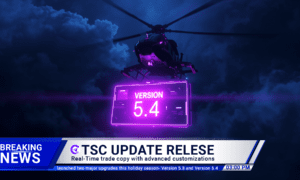From financial trading platforms to food delivery apps, businesses increasingly depend on real-time metrics to make decisions worth millions of dollars. The challenge is that today’s data environments are not just big—they are petabyte-scale, multi-dimensional, and constantly in flux. Detecting anomalies within that scale is no longer about spotting one-off spikes; it’s about continuously monitoring complex, interdependent signals across industries where minutes of delay can translate into millions of dollars lost.
This shift is where Suvodeep Pyne, Senior Staff Software Engineer and Senior IEEE member, has built his reputation. With more than 15 years in scalable systems and big data infrastructure, Pyne has repeatedly bridged research and engineering to deliver systems that don’t just manage scale—they make it actionable.
Why Real-Time Anomaly Detection Matters
In modern digital businesses, anomalies are not rare edge cases—they are constant risks. A subtle drop in page views on a social platform, a delayed transaction in e-commerce, or an outlier in trading volumes can rapidly compound into multi-million-dollar consequences. A recent IBM Security report found that delayed detection remains one of the leading contributors to enterprise financial losses, underscoring the importance of catching signals in seconds rather than hours.
Pyne’s work on StarTree ThirdEye, an anomaly detection platform built on Apache Pinot, takes direct aim at this challenge. Designed to operate at petabyte scale, ThirdEye empowers enterprises to monitor everything from ad revenue streams to clickstream data in real time. “Every business metric has its own fingerprint,” Pyne explains. “The key is building systems flexible enough to adapt across verticals—whether it’s finance, logistics, or e-commerce—without losing speed or accuracy.”
Building ThirdEye: From Prototype to Global Impact
When Pyne joined StarTree as a founding engineer in 2020, ThirdEye was little more than a concept. Over four years, he led it from prototype to a platform now adopted by Fortune 500 firms and global startups alike, with customers including Robinhood, DoorDash (as explained in this press article), and Just Eat Takeaway.
ThirdEye now processes over 200 billion transactions a month, saving an estimated $5–10 million annually by catching anomalies before they snowball into financial or reputational losses. In India, Razorpay leveraged the platform to reduce fraud detection time from days to minutes, cutting costs by more than $3 million annually. Food delivery giant Just Eat Takeaway reported $2 million in annual savings thanks to the system’s ability to triage delivery network issues across multiple countries.
The scale and efficiency of ThirdEye also attracted open-source adopters like Walmart, Uber, and Confluent, establishing it as both an enterprise SaaS product and a community-driven innovation.
Tackling the Technical Frontier
The technical challenge was formidable. Apache Pinot clusters handle more than 10 terabytes of data ingestion per day, with datasets often noisy, irregular, or incomplete. Pyne architected ThirdEye to support pluggable pipelines and anomaly detection algorithms, including extending the “matrix profile” algorithm to handle datasets with gaps and irregularities—an innovation that resulted in multiple patent applications.
“Not all anomalies are created equal,” Pyne says. “A sudden traffic spike could be fraud—or it could be a celebrity tweet. The system has to learn to tell the difference.”
His scholarly contributions, including the patent Joins and Aggregations on Massive Graphs Using Large-Scale Graph Processing, reflect this same pursuit of scale with nuance: designing frameworks where speed, resilience, and interpretability coexist.
From Funding to Future Directions
Pyne’s efforts haven’t just been technical—they’ve also shaped the strategic trajectory of the startups he’s helped build. In 2019, he secured $100,000 in Google Cloud Startup Funding, laying the groundwork for scaling infrastructure and accelerating Quasix’s early adoption.
Looking ahead, he sees anomaly detection evolving beyond single-metric monitoring into multi-dimensional intelligence—systems that don’t just catch anomalies but contextualize them across business, user behavior, and infrastructure layers. “The real challenge isn’t just finding what’s unusual,” Pyne, an IETE Fellow, explains. “It’s about telling you why it matters, what to do about it, and how it connects to the bigger picture.”
Why It Matters
The growing complexity of global data systems means that resilience is no longer optional. Enterprises today need platforms that scale seamlessly, adapt across industries, and respond in real time to the signals that matter most. Pyne’s trajectory—spanning open-source leadership, patents, and enterprise-scale platforms—demonstrates what it takes to meet that demand.
“Every company is data-driven now,” he reflects. “But being data-driven only matters if you can trust the signals at scale. That trust is what we’re building with anomaly detection.”































